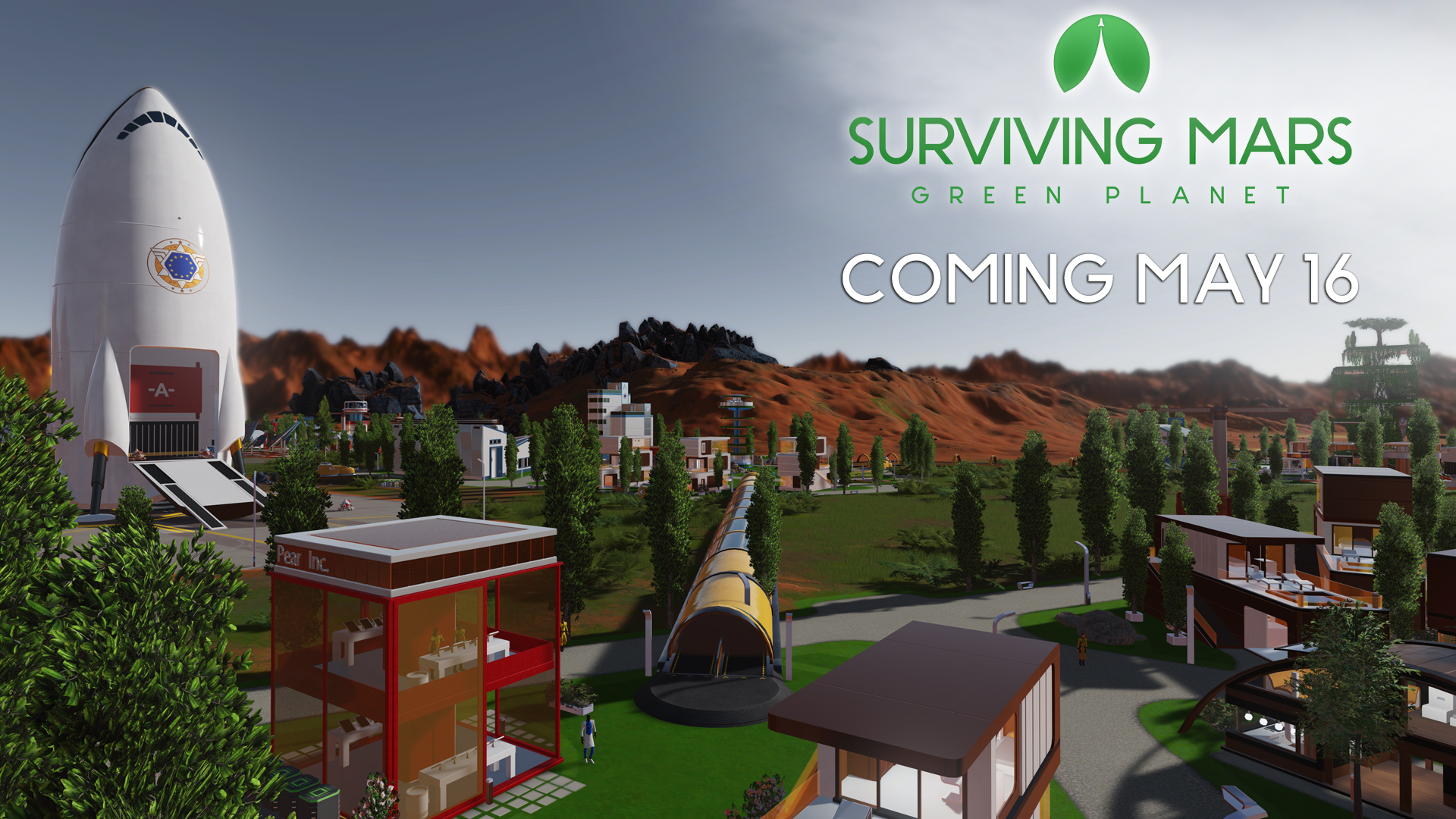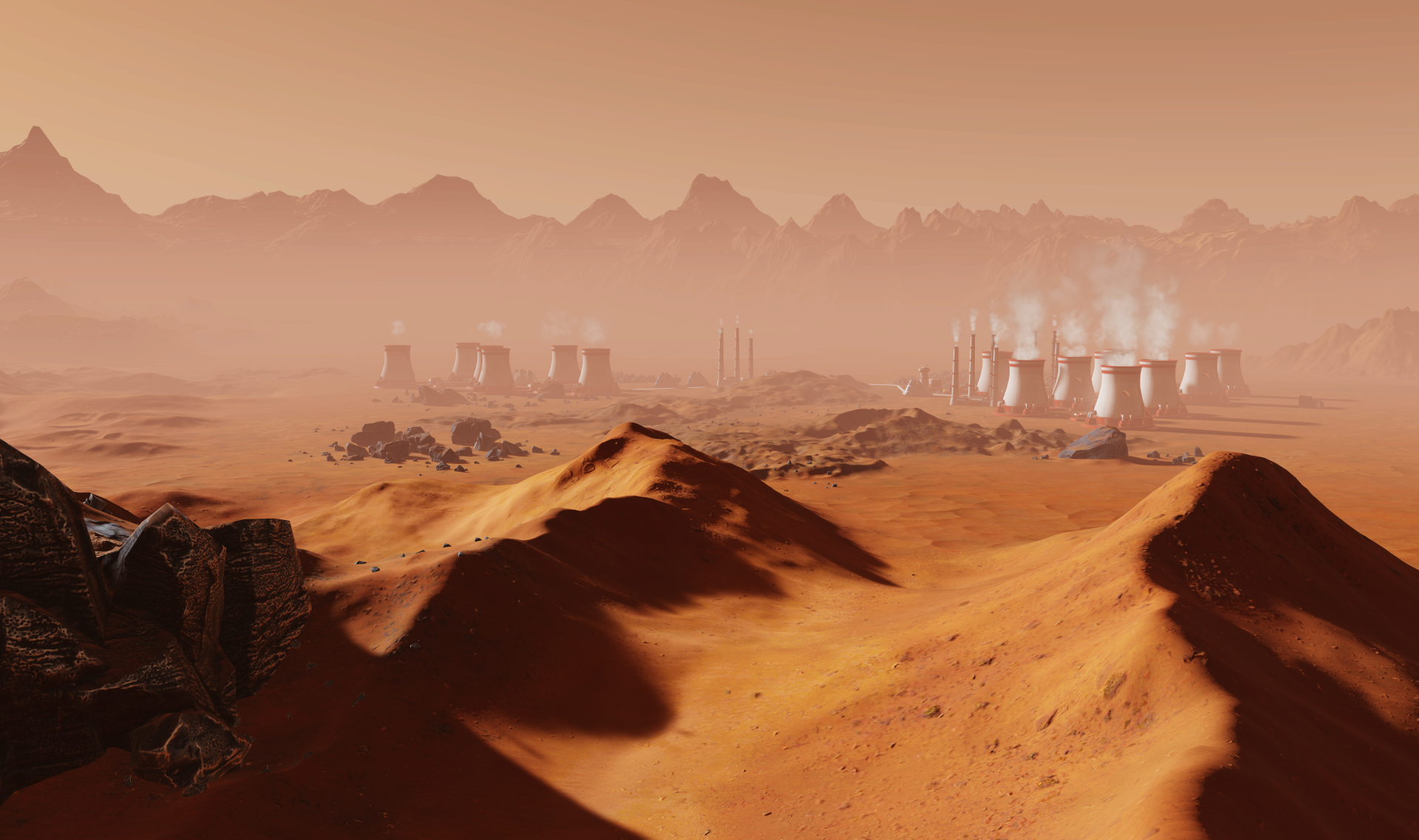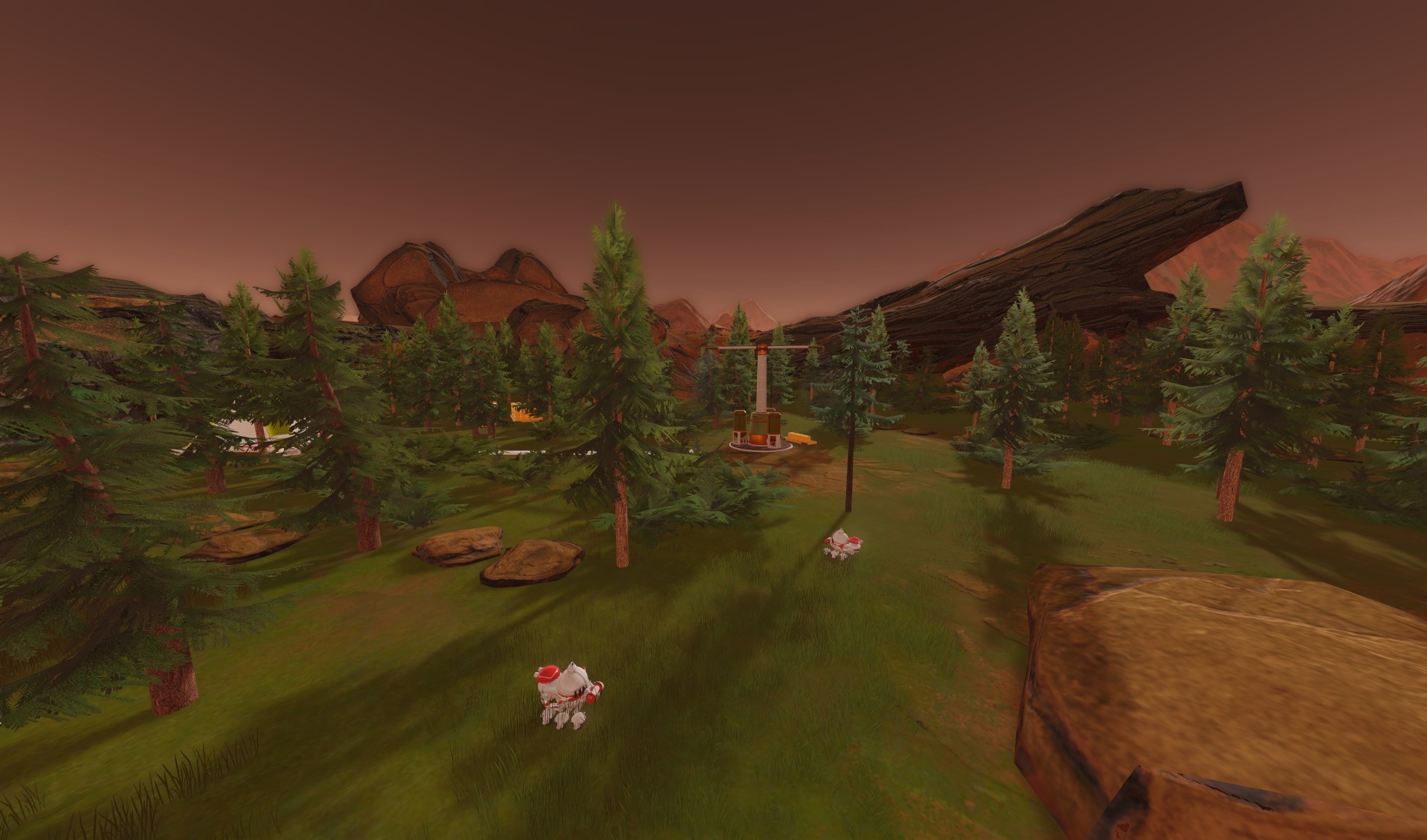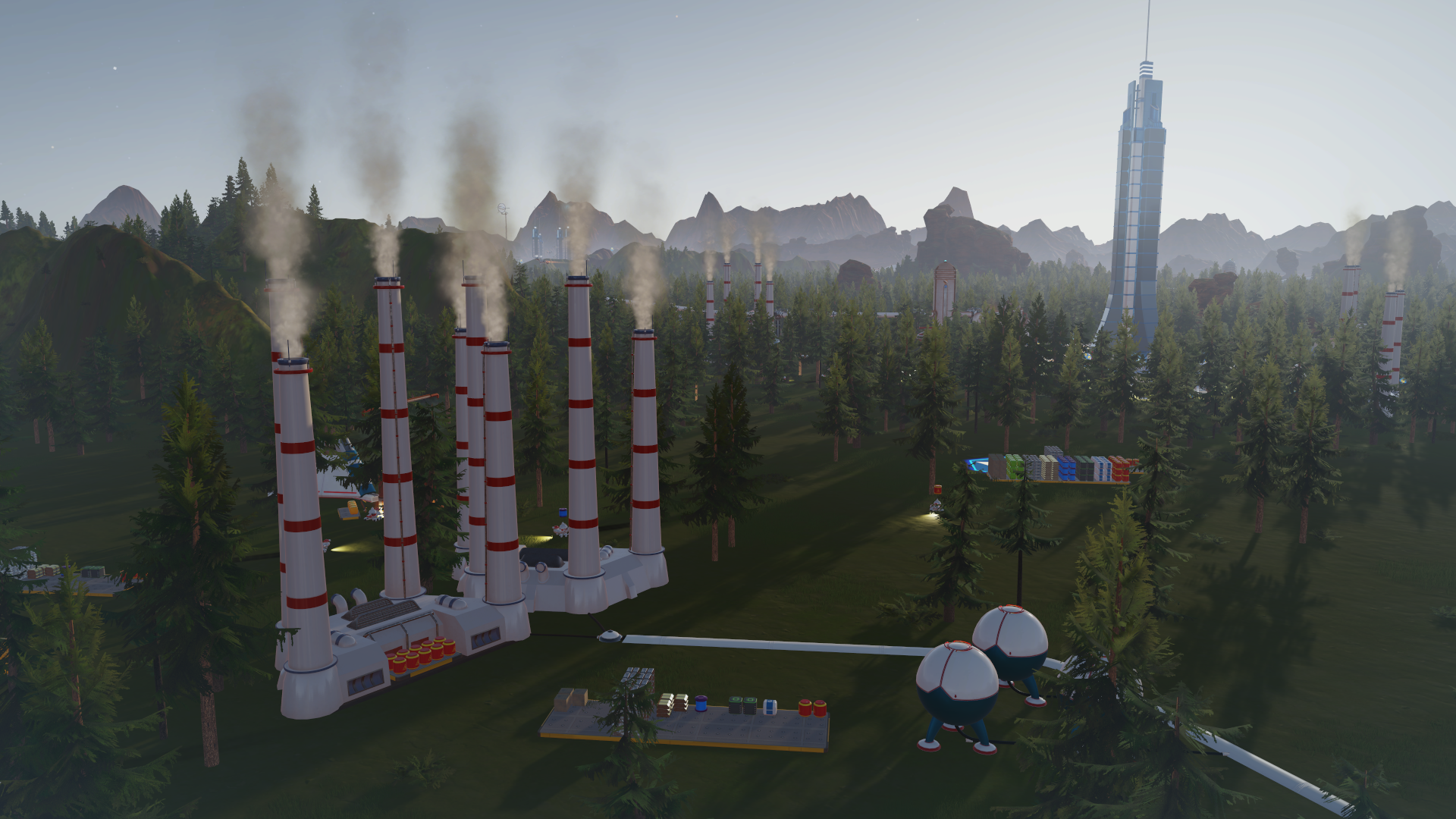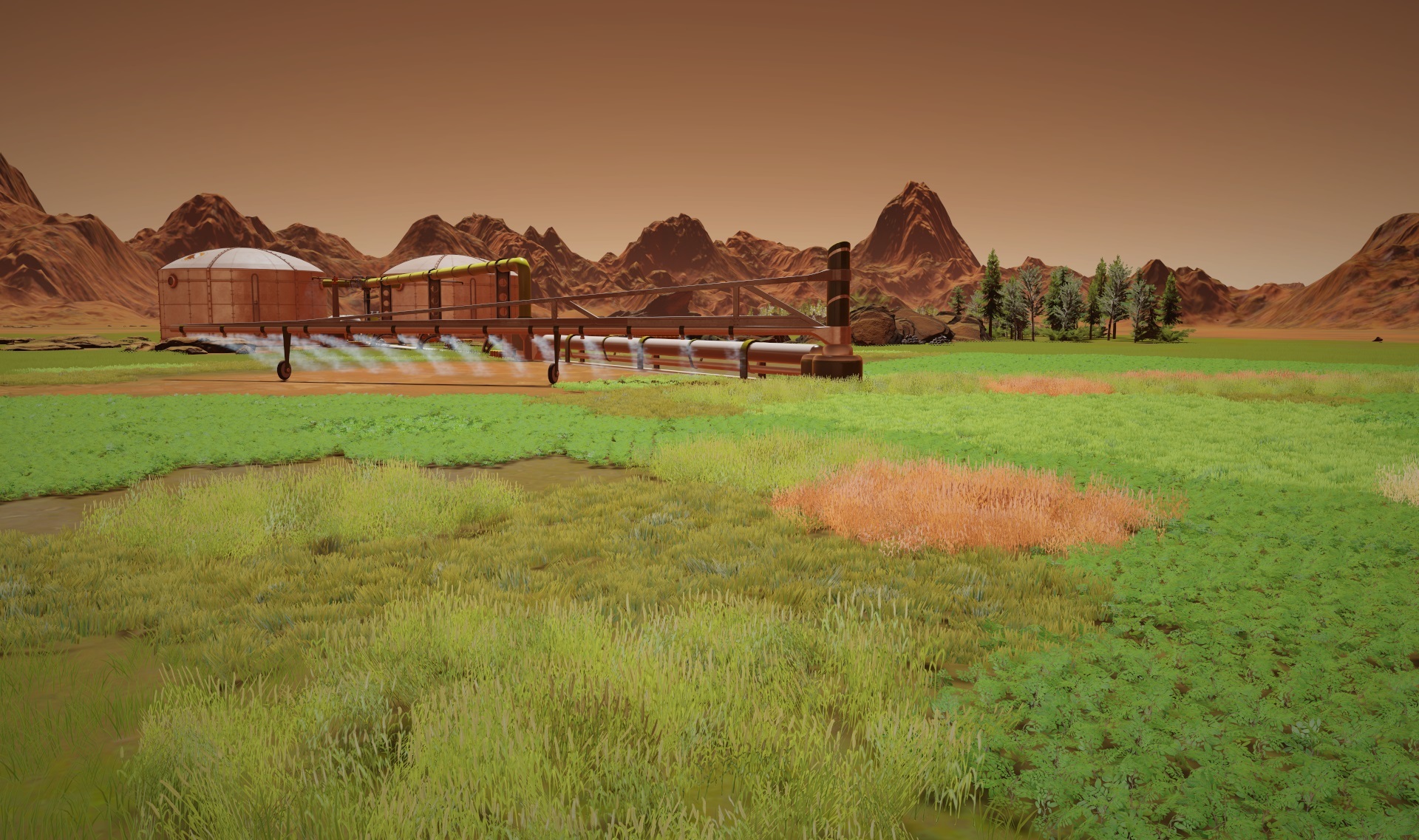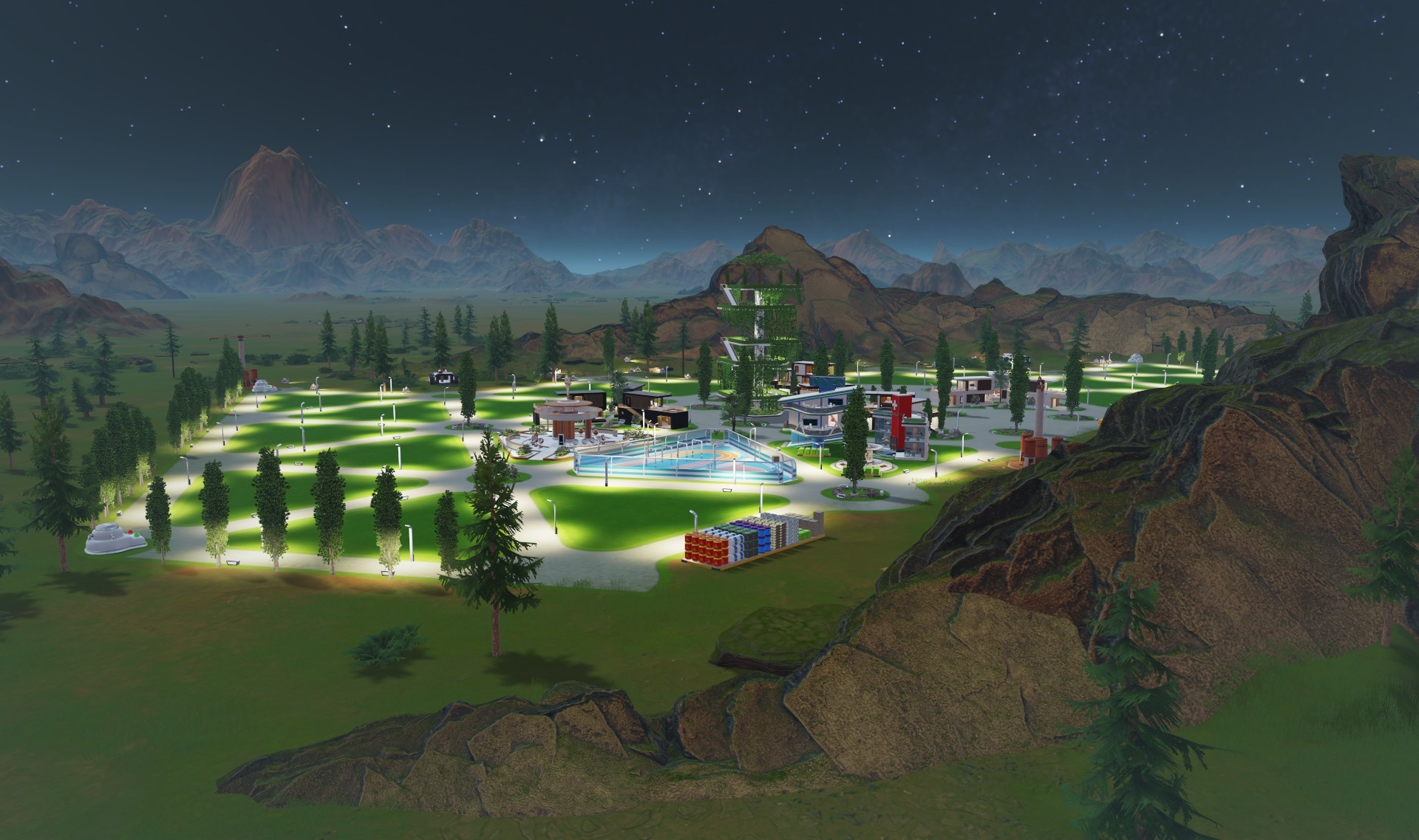Green Planet Dev Diary #3: Vegetation
https://store.steampowered.com/app/952890/Surviving_Mars_Green_Planet/
Hi Everyone!
We’re back with another dev diary for Green Planet, this time focusing on the greener aspects of the expansion – plant life. So far we talked about global vegetation and the need to import, produce and spread huge amounts of seeds to cover the planet in flora. We briefly mentioned the Forestation Plant as the main way to engage with local forestation and the Open Farm as a way to produce food and seeds by planting various crops on a larger scale. It’s time to dig deeper into vegetation!
If I was to summarize what we did to make Mars green, I would have to use the phrase “we went crazy!”
The original vision for the surface of Mars was a silent, barren place, where the only objects that dotted the landscape were old, eroded rocks with otherworldly appearance. We imagined that the rocket you land and the vehicles that scurry around it would be the only thing that moves – aside from the occasional dust devil. Later you would construct domes that vastly contrast with the reddish sands with their lush green and bright lights during the night, which would appear as if someone placed a piece of Earth on the planet.
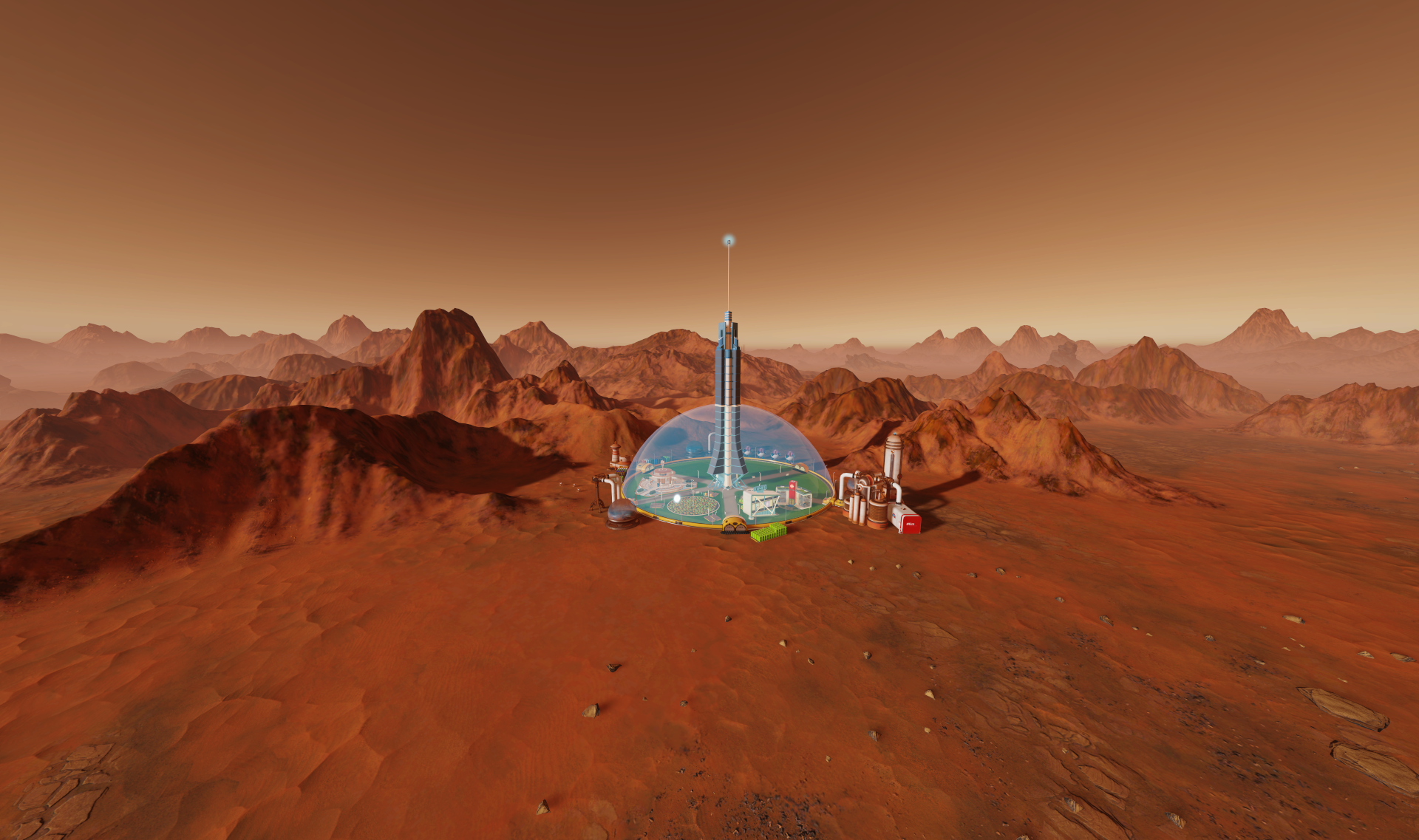
Then the ideas behind Green Mars came forth. We envisioned a completely different planet at the end of the process, a place where the previously contrasting borders between the lush-green domes and the outside world are blurred or non-existing. Dense forests dominate the horizon and lush-green grass spreads everywhere, with only the largest of rocks still remaining as an effigy of an age past.
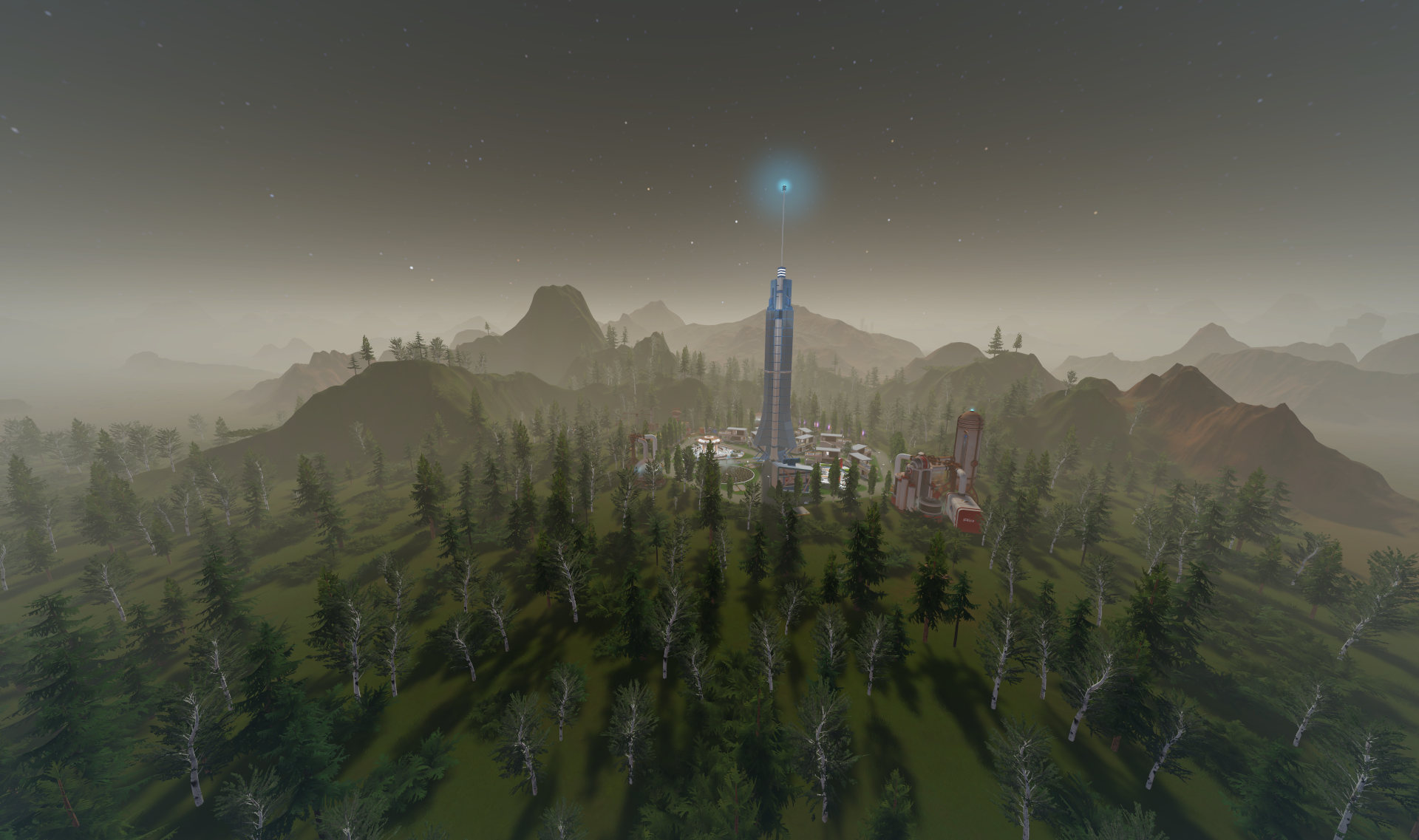
And we wanted you to do all of this without melting your GPU… Praises to great programmers and their magic!
We started with a bunch of statements like “each hex of the colony could be populated with wild plant life”, or “plants should grow and wither according to terraforming progress” and “soils are important”, and then we worked on them until, finally, we had a working forestation system.
In the beginning there were the soils… We were inspired by “The Martian” and the possibility to sustain Earth vegetation on the seemingly barren sand. We did our research and designed the system. The soil quality of the original Martian soil is set to 0%, and the most fertile soil you can create is denoted as 100%, a rich Earth-like soil. This calculation is made for each hex of the colony every hour and is displayed on the screen as a Soil Quality overlay - the greener the hex the better the soil.

Now that we had the concept of soil, we needed to add factors that change its quality. So, the idea of rains and toxic rains was born. Of course, we all want rains to spread nutrients and meliorate the soil, but unless the planet has stable atmosphere, the falling rains would be toxic. They reduce the soils quality and create toxic pools that harm the growth of nearby plants.
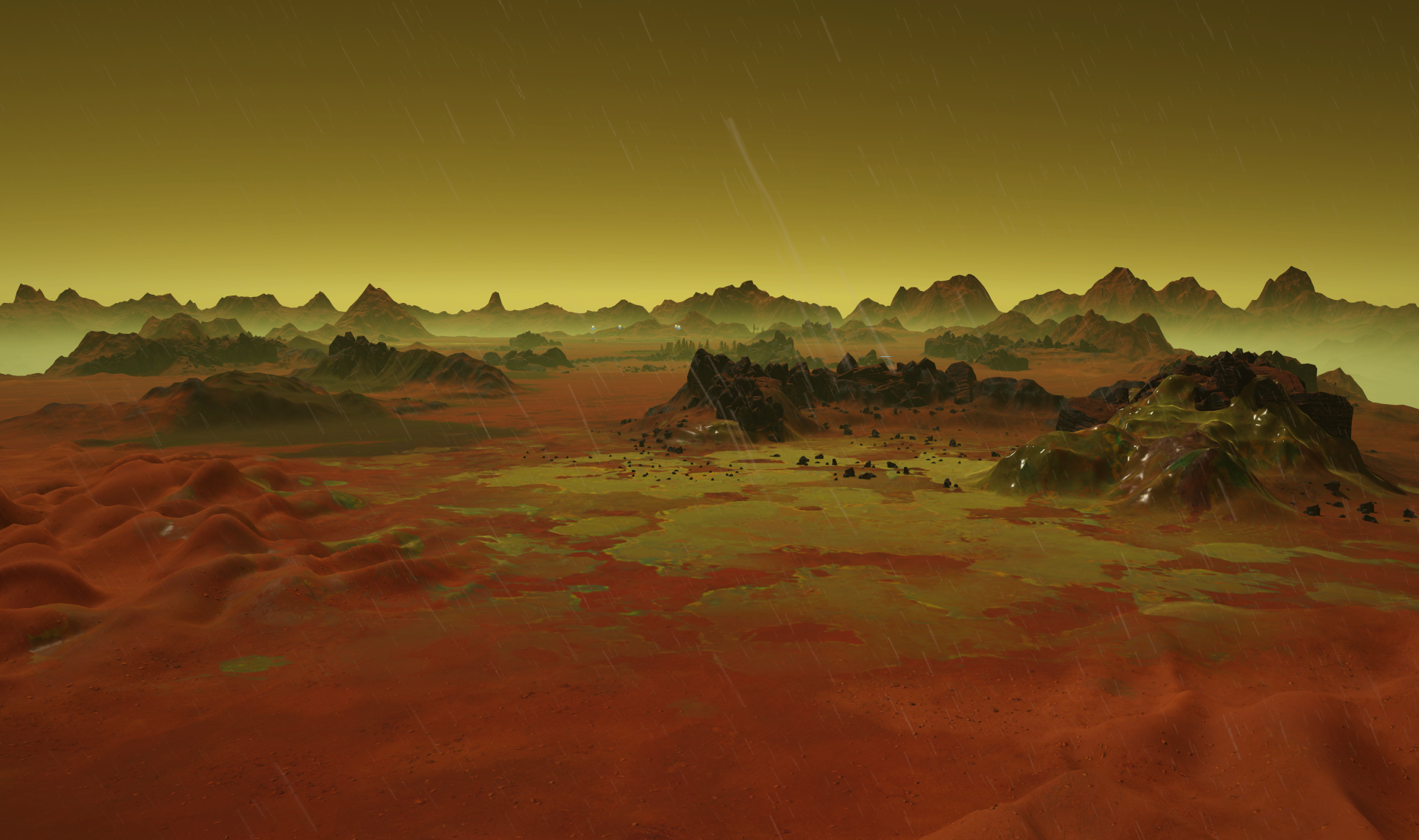
As you add more water to the atmosphere, the toxic rains gradually end and clear water rains begin. They increase the local soil quality via erosion, create subterranean waters and water the plants. Additionally, artificially constructed Lakes leak water into their surrounding ground, improving significantly the local soils.

So, what can you plant on Mars?
Initially the soil quality is so low that you can only grow lichen. Lichen are famous for being very resistant and able to survive almost anywhere on Earth. You’ll be able to plant lichen pretty much from the start of the game. They do not require terraforming progress or soil quality and they improve the local soil quality over time. However, they will easily die during toxic rains.
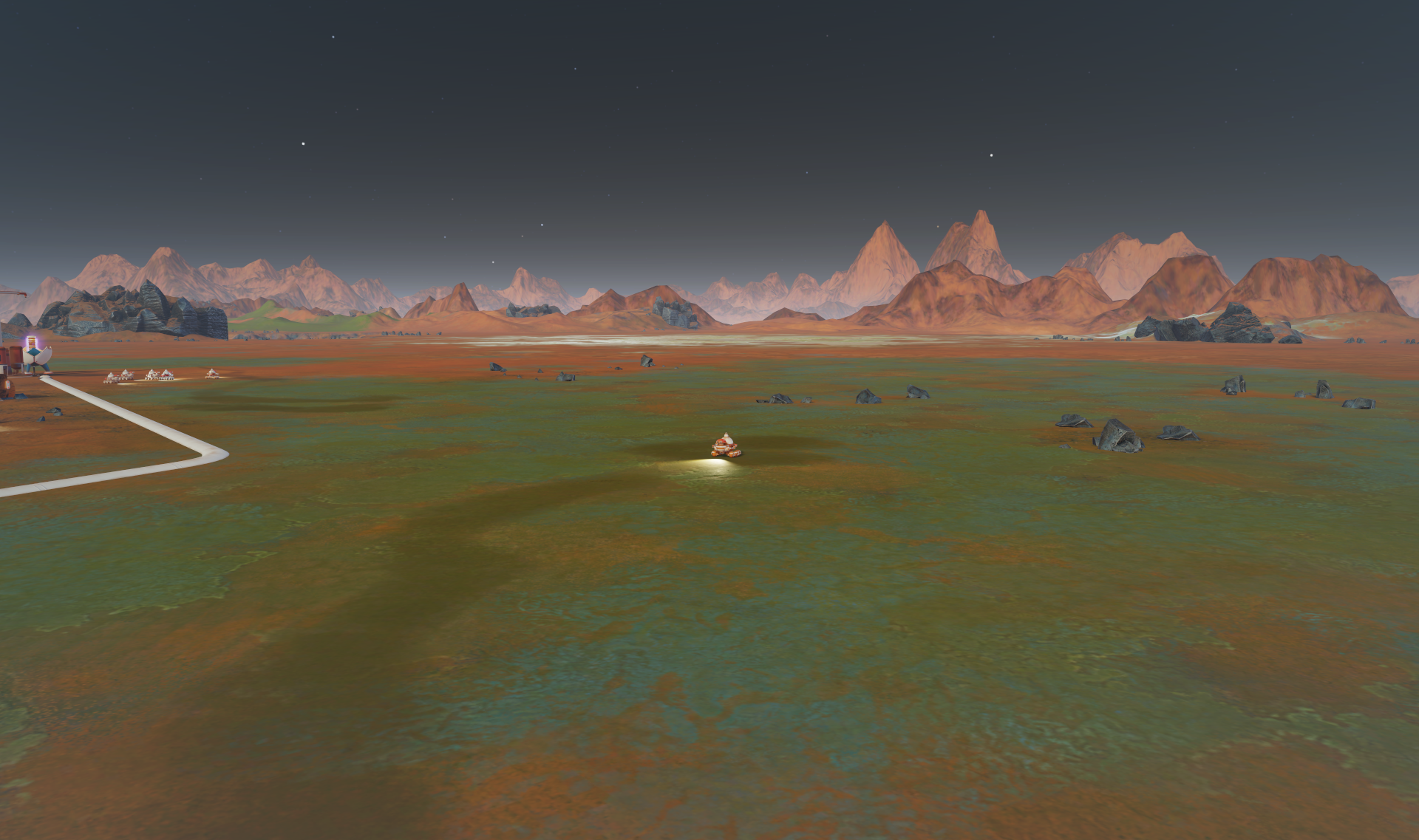
As the terraforming initiative progresses, you will unlock other types of vegetation: grass, bushes, pine trees and mixed trees. Grass grows quick and also improves the soil quality, but it’s not as efficient as lichen and trees. However, it’ll spread on its-own over time, so it does some of your work on its own. Bushes grow slower but can be harvested for seeds, while Trees grow the slowest, provide the most seeds, and stabilize the local soils a lot.
Grass, trees, and bushes will spread on their own over time. The speed with which they spread is directly affected by the amount of vegetation around the colony and the global Vegetation coverage. The spread is initially slow but speeds up over time.
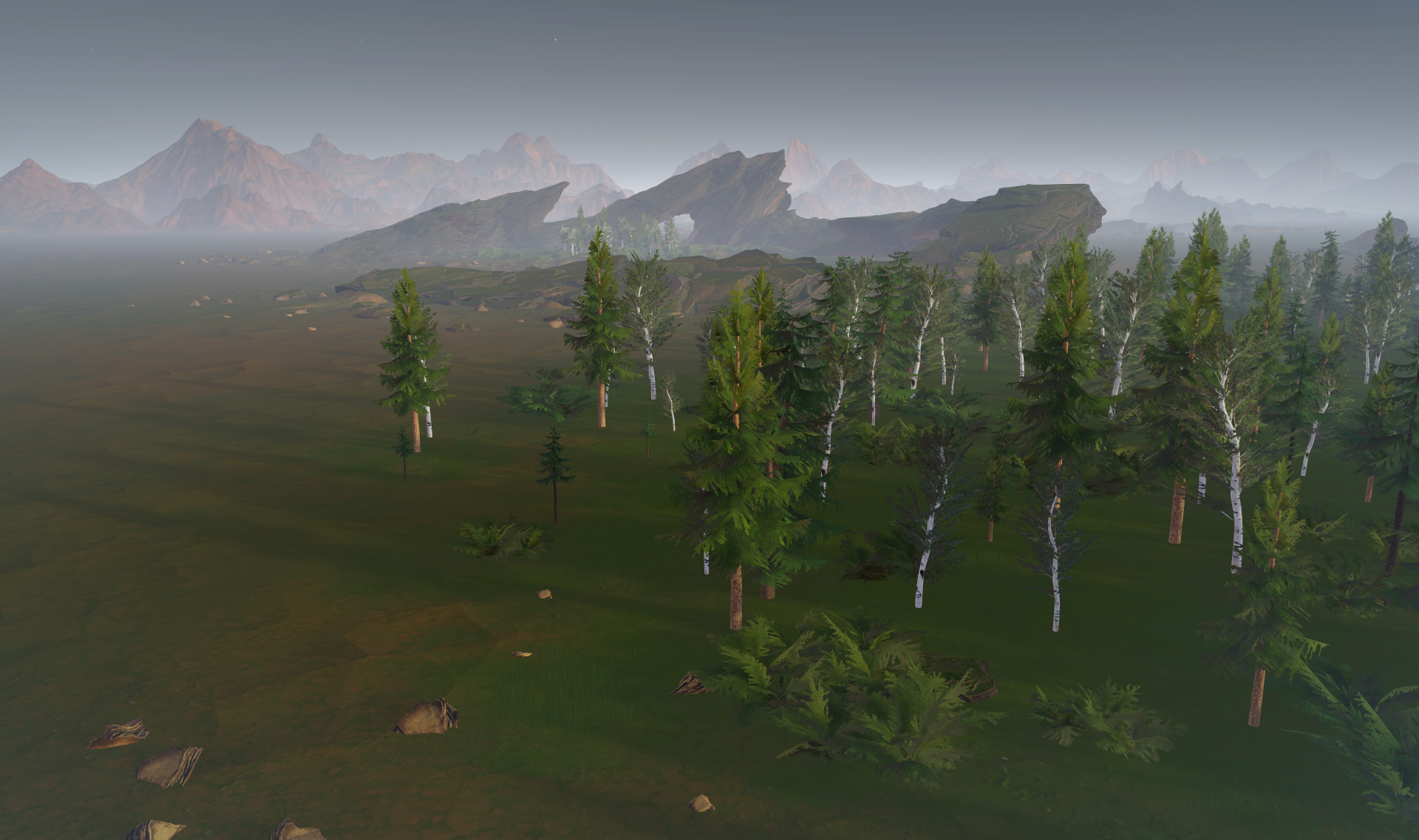
Vegetation booms will occur at certain terraforming thresholds. During vegetation booms, a lot of seeds are carried away by the winds and wild plants get seeded around the colony.
You’ll also be able to plant various crops in the Open Farm. These require good terraforming conditions, a lot of water, and high soil quality, but yield huge amounts of Food. Most crops significantly decrease the local soil quality, while others increase it. These crops do not spread on their own and are harvested by Drones to free space for new plants.
As mentioned, planting of crops or wild plants require some seeds to be spread around. The Seeds are a new resource in the game, which is initially imported from Earth and later produced in farms on Mars. They’re measured in tons and used as base material for the creation of substantial plant life on Mars.
This pretty much summarizes the basic principles of the vegetation system in Green Planet. See you next week, when we’ll be discussing the new Special Projects and disasters in more details.
Hi Everyone!
We’re back with another dev diary for Green Planet, this time focusing on the greener aspects of the expansion – plant life. So far we talked about global vegetation and the need to import, produce and spread huge amounts of seeds to cover the planet in flora. We briefly mentioned the Forestation Plant as the main way to engage with local forestation and the Open Farm as a way to produce food and seeds by planting various crops on a larger scale. It’s time to dig deeper into vegetation!
If I was to summarize what we did to make Mars green, I would have to use the phrase “we went crazy!”
The original vision for the surface of Mars was a silent, barren place, where the only objects that dotted the landscape were old, eroded rocks with otherworldly appearance. We imagined that the rocket you land and the vehicles that scurry around it would be the only thing that moves – aside from the occasional dust devil. Later you would construct domes that vastly contrast with the reddish sands with their lush green and bright lights during the night, which would appear as if someone placed a piece of Earth on the planet.

Then the ideas behind Green Mars came forth. We envisioned a completely different planet at the end of the process, a place where the previously contrasting borders between the lush-green domes and the outside world are blurred or non-existing. Dense forests dominate the horizon and lush-green grass spreads everywhere, with only the largest of rocks still remaining as an effigy of an age past.

And we wanted you to do all of this without melting your GPU… Praises to great programmers and their magic!
We started with a bunch of statements like “each hex of the colony could be populated with wild plant life”, or “plants should grow and wither according to terraforming progress” and “soils are important”, and then we worked on them until, finally, we had a working forestation system.
In the beginning there were the soils… We were inspired by “The Martian” and the possibility to sustain Earth vegetation on the seemingly barren sand. We did our research and designed the system. The soil quality of the original Martian soil is set to 0%, and the most fertile soil you can create is denoted as 100%, a rich Earth-like soil. This calculation is made for each hex of the colony every hour and is displayed on the screen as a Soil Quality overlay - the greener the hex the better the soil.

Now that we had the concept of soil, we needed to add factors that change its quality. So, the idea of rains and toxic rains was born. Of course, we all want rains to spread nutrients and meliorate the soil, but unless the planet has stable atmosphere, the falling rains would be toxic. They reduce the soils quality and create toxic pools that harm the growth of nearby plants.

As you add more water to the atmosphere, the toxic rains gradually end and clear water rains begin. They increase the local soil quality via erosion, create subterranean waters and water the plants. Additionally, artificially constructed Lakes leak water into their surrounding ground, improving significantly the local soils.

So, what can you plant on Mars?
Initially the soil quality is so low that you can only grow lichen. Lichen are famous for being very resistant and able to survive almost anywhere on Earth. You’ll be able to plant lichen pretty much from the start of the game. They do not require terraforming progress or soil quality and they improve the local soil quality over time. However, they will easily die during toxic rains.

As the terraforming initiative progresses, you will unlock other types of vegetation: grass, bushes, pine trees and mixed trees. Grass grows quick and also improves the soil quality, but it’s not as efficient as lichen and trees. However, it’ll spread on its-own over time, so it does some of your work on its own. Bushes grow slower but can be harvested for seeds, while Trees grow the slowest, provide the most seeds, and stabilize the local soils a lot.
Grass, trees, and bushes will spread on their own over time. The speed with which they spread is directly affected by the amount of vegetation around the colony and the global Vegetation coverage. The spread is initially slow but speeds up over time.

Vegetation booms will occur at certain terraforming thresholds. During vegetation booms, a lot of seeds are carried away by the winds and wild plants get seeded around the colony.
You’ll also be able to plant various crops in the Open Farm. These require good terraforming conditions, a lot of water, and high soil quality, but yield huge amounts of Food. Most crops significantly decrease the local soil quality, while others increase it. These crops do not spread on their own and are harvested by Drones to free space for new plants.
As mentioned, planting of crops or wild plants require some seeds to be spread around. The Seeds are a new resource in the game, which is initially imported from Earth and later produced in farms on Mars. They’re measured in tons and used as base material for the creation of substantial plant life on Mars.
This pretty much summarizes the basic principles of the vegetation system in Green Planet. See you next week, when we’ll be discussing the new Special Projects and disasters in more details.
From Haemimont Games,
Ivan Grozev,
Lead Designer of Green Planet
Ivan Grozev,
Lead Designer of Green Planet
